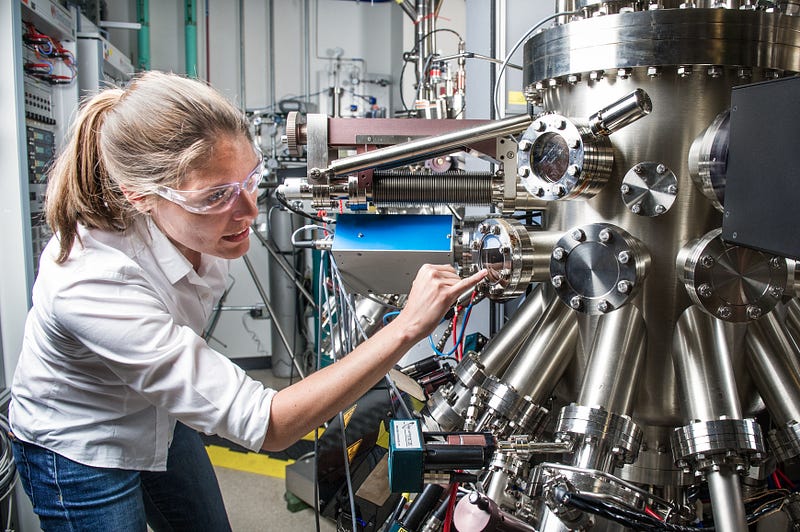A Discussion of “Rage Against the Machines: Labor-Saving Technology and Unrest in Industrializing England”
“Machines are going to take all the jobs,” is a sentiment I hear and read often. As an economist, I know this is not true. There will be disruption. Some jobs will be lost. Some jobs will be created.
In fact, few know how dynamic our economy always is. We all hear the unemployment rate reported by the Bureau of Labor Statistics. They also conduct the Establishment Payroll Survey where they collect information on how many jobs are gained and lost, among other things.
The report you hear in the news is the net number, jobs gained minus jobs lost. Using 4th quarter 2019 data, they reported
- 7,831,000 Total Private Gross Jobs Gains
- 7,039,000 Total Private Gross Jobs Losses
- 792,000 Net New Jobs
The last number is what would have been reported for the quarter, or approximately 264,000 new jobs each month. The news reports are usually giving the monthly net number, which is often in the plus or minus range of 200,000.
It is easy then to have the impression that literally 200,000 jobs have been created while in fact, it was over 10 times that number on a monthly basis. And the same holds for the job losses.
You have businesses all across the economy opening and closing, expanding and contracting, hiring and firing; all results in lots of jobs created and lost.
What’s my point? That our economy is a lot more dynamic than most of us realize.
That said, the fear of machines, robots, AI, and automation, is a fear of a new trend where people think more jobs will be lost without enough being created to offset the losses.
While I doubt that is true because there will be products and services sold in the future we cannot even imagine today, it does not discount the fact there will be jobs lost.
In the big picture, the rise of technology is what economists call a positive shock. That is a technological improvement that allows productivity to rise, which means more output for any given amount of inputs.
That is a good thing at the macro level. However, it will mean in some industries there will be fewer people needed.
- For those who lose their jobs, will they get a new one?
- Will they have the skills to move into any new jobs that are being created?
- Will the new productivity lead to rising incomes and falling prices for all or only for some?

These fears are nothing new as we see in Caprettini and Voth (2020) who are using new data to investigate the Swing Riots of 1830 in England. While various factors may have contributed to the unrest, they are investigating how much new threshing machines that reduced the need for labor contributed to the riots.
Background on the Captain Swing Riots
The authors assert the riots were
the largest wave of unrest in English history, with more than 3,000 cases of arson, looting, attacks on authorities, and machine breaking across 45 counties. (p. 305)
In this paper the authors say they are able to show that the adoption of the labor-saving threshing machines was a key factor behind these riots, but they acknowledge there were other issues that could have led to these riots (p. 306)
- Bad weather
- A poor harvest
- News of the French and Belgian revolutions
- The Enclosures
To explain the last one, England used to have common lands open for rural people to share for grazing that began to be fenced off for the private owner as part of the evolution from feudalism to capitalism. Losing access to this land left many without a livelihood and dependent on jobs for income.
By the 1800s, English agriculture had modernized into an enterprise that primarily produced for the market as opposed to small, subsistence level farms.
Hired labor was a regular feature, particularly for the labor-intensive threshing process in the winter, “traditionally using flails swung overhead.” (p. 306) Ah! I suppose that is where the “swing” comes from in the Swing Riots.
According to the authors, on average 38% of the adult males in a parish worked in agriculture. (p. 310) Further, 50% of a farm laborer’s winter income came from threshing, before mechanization. (p. 306)
The first Swing Riots broke out in 1830: (p. 307)
- 3,000 riots across 45 counties
- Arson was frequent
- 514 threshing machines were attacked
- Rioters were rural workers and local craftsmen
The Model
The authors are asserting that as these new threshing machines increase so does the likelihood of riots, once accounting for some control variables.
In fact, they do find “a strong, positive correlation between riots and adoption of the new machines.” (p. 311)
However, they acknowledge they do not have the data needed to discredit other factors like immigration that could be playing a role (p. 312). For this reason, they try a second way of testing their hypothesis that will not suffer from potential bias.
Their goal: show the adoption rate of threshers is the source of the riots.
Their problem: the adoption rate of threshers could be correlated with other factors that will bias the estimates.
Solution: soil that is good for wheat is highly correlated with the adoption of threshers because these threshers worked on wheat only at this point, and the soil variable is not correlated with those other factors like the adoption of threshers could be.
They can thus capture just the part of the adoption rate of threshers that is correlated to the number of riots by looking at the correlation of soil good for wheat and the prevalence of riots.
This is the Instrumental Variables estimator, and it is used in cases like this when there are concerns about your explanatory variable (adoption of threshers) being completely exogenous.
Thus concludes our tiny peak into the world of econometrics.
Results
They find that the probability of a riot occurring in a particular parish doubles from 13.6% for parishes with no threshing machines to 26.1% for those who had at least one (p. 306)
However, they find the likelihood of a riot was not the same everywhere.
- Riots were more likely in areas farther away from major manufacturing towns. (p. 317) When such a town was near, that meant alternative employment was more likely. Thus, these workers were more likely to “exit” than to riot.
- Workers who had been directly impacted by the enclosures movement were more likely to riot.
To bring this forward to our times, workers who lose their jobs to automation will be more likely to express their unrest if they have fewer nearby job options and if other factors had previously negatively impacted their wages.
Another application to our time could be that the threshing machines were a positive shock to the economy and a negative shock to the workers. That is, landowners (capital) saw profits rise as share of income going to labor fell. (p. 317) This is something that is being observed in our economy today, likely also due to positive technological shocks.
The authors do note they are examining “a large and rapid dislocation” because threshing was the main income for these workers in the winter months, and these workers were a large portion of the labor force in the English parishes. (p. 317) More gradual changes may not cause as much unrest.
We cannot stop technological progress, nor do I think we should. We can look though to the past to see how to help the adjustment process.
One lesson from this examination of the past that stands out to me is we need to see which workers are being most hurt and figure out how to provide them an exit.
References: Caprettini, Bruno and Hans-Joachim Voth (2020). “Rage Against the Machines: Labor-Saving Technology and Unrest in Industrializing England.” AER: Insights, 2(3): 305–320.




